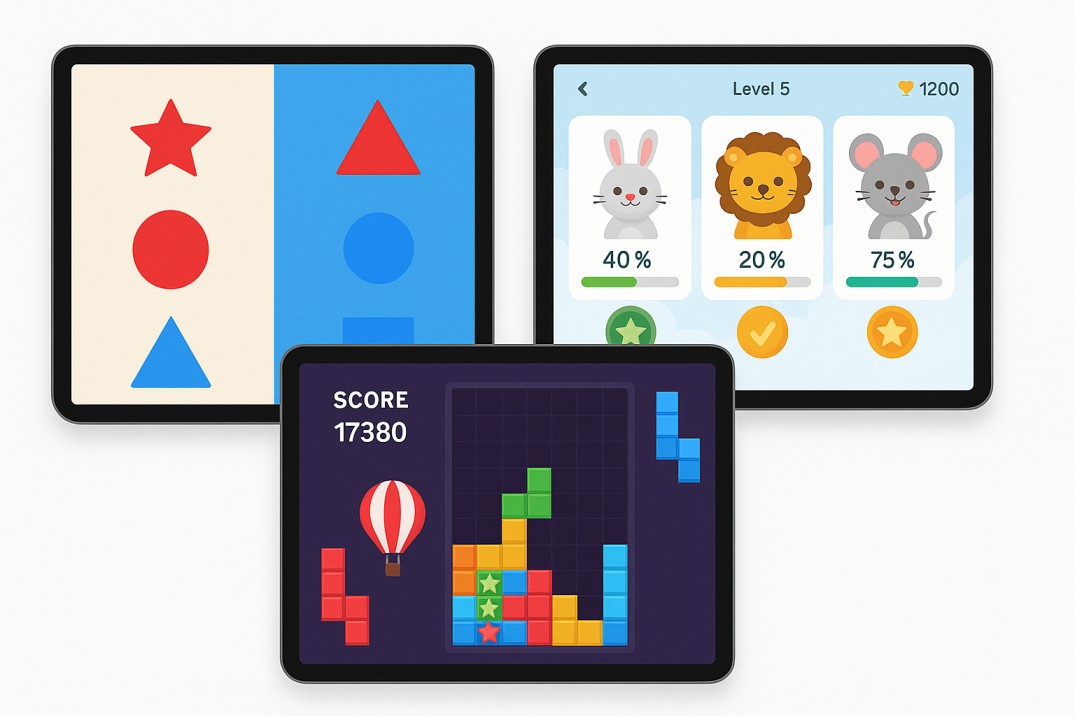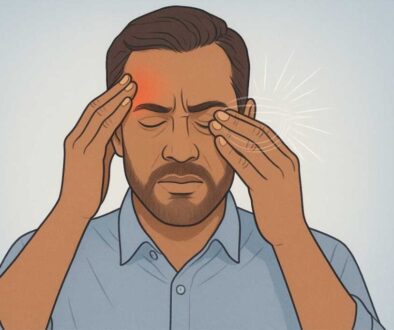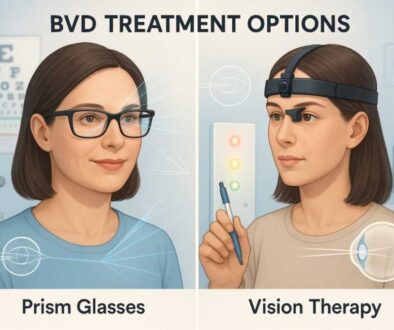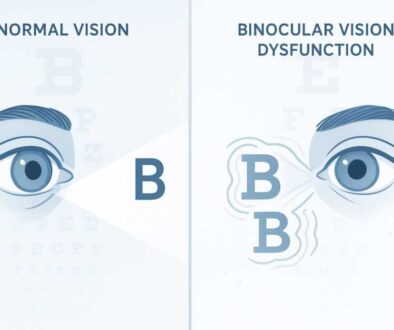5 Free Vision Therapy Games Your Child Can Play at Home [2025 Guide]
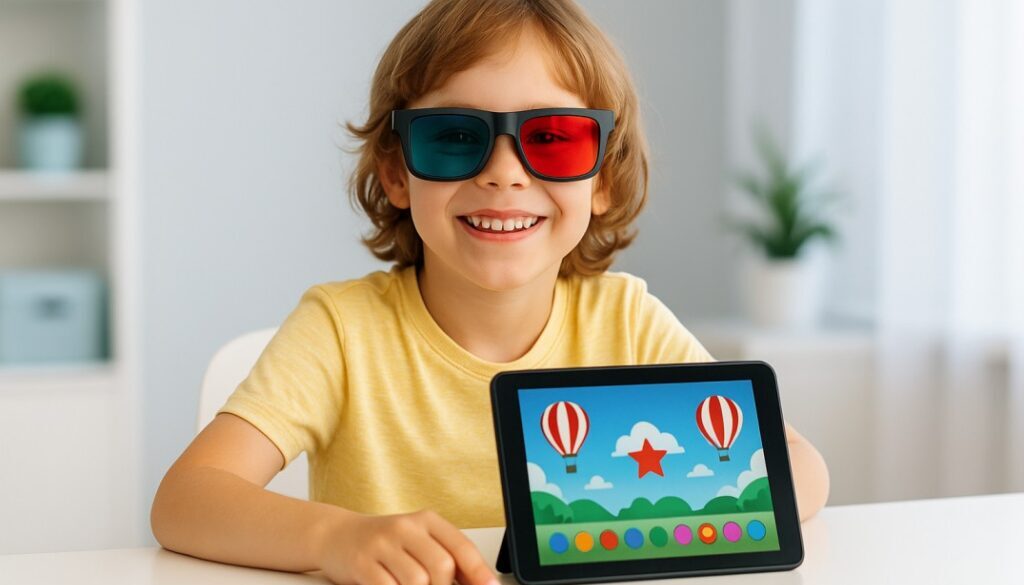
5 Free Vision Therapy Games Your Child Can Play at Home [2025 Guide]
Bottom Line Up Front: Transform your child’s vision therapy into an enjoyable daily routine with these five evidence-based free vision therapy games that improve amblyopia, convergence issues, and visual skills. Research shows children using game-based therapy see 2x faster improvement than traditional patching alone, with 60% better compliance rates.
If your child struggles with lazy eye (amblyopia), crossed eyes, or reading difficulties, you’ve likely heard about vision therapy. But convincing a child to do repetitive eye exercises? That’s where parents often hit a wall. The breakthrough solution combines the therapeutic power of free vision therapy games with the engagement of amblyopia games online free that your child will actually want to play.
What Makes Free Vision Therapy Games So Effective?
Free vision therapy games work by stimulating both eyes simultaneously through dichoptic training—a method where each eye sees different visual elements that must work together to complete tasks. A 2024 study in JAMA Ophthalmology found that patients using dichoptic games for 30 minutes daily saw 2x faster improvement in visual acuity than those using patching alone, while studies show that game-based therapy improves compliance by 60% in children.
Unlike traditional patching that covers the stronger eye, these amblyopia games online free engage both eyes, promoting active brain-eye coordination and making therapy enjoyable rather than punishment.
The Science Behind Game-Based Vision Therapy
Recent breakthrough research validates what parents and therapists have observed: games work. A 12-week home-based video game vision therapy intervention can provide equivalent treatment outcomes to eye patching for amblyopia in children ages 5 to 18 years.
The key lies in neuroplasticity—the brain’s ability to form new neural connections. When children play vision therapy games, they’re literally rewiring their visual processing system while having fun. By making both eyes cooperate, the amblyopic brain is able to relearn as a result of an increase in the level of plasticity in the brain.
5 Top Free Vision Therapy Games for Home Use
Finding effective amblyopia games online free can be challenging, but these five platforms have been validated by research and positive parent feedback. Each offers unique approaches to vision therapy while maintaining the engagement factor that makes children want to continue their treatment.
1. Lazy Eye Games (LazyEyeGames.com)
Best for: Amblyopia (lazy eye) treatment
Age range: 6+ years
Equipment needed: Red-blue 3D glasses, computer or tablet
Lazy Eye Games provides a comprehensive set of free vision therapy games specifically designed for treating amblyopia. The platform offers multiple game types that require both eyes to work together, from simple tracking exercises to complex puzzle-solving activities.
How it works: Players wear red-blue anaglyph glasses while completing tasks where each eye sees different colored elements. Success requires both eyes to contribute information, gradually strengthening the weaker eye.
Recommended usage: 40-60 minutes each day, split into 2 or 3 20-minute sessions
Parent tip: Start with 10-15 minute sessions to prevent eye fatigue, especially for younger children.
2. EyeGames for Amblyopia
Best for: Binocular vision improvement and hand-eye coordination
Age range: 4+ years
Equipment needed: Computer or tablet (no special glasses required)
EyeGames offers simple and accessible amblyopia games online free specifically designed for vision therapy, including games that improve binocular vision and hand-eye coordination. The platform features colorful, child-friendly interfaces with progressive difficulty levels that make it one of the most popular free vision therapy games available.
How it works: Games focus on visual tracking, depth perception, and eye teaming through activities like catching falling objects, matching patterns, and following moving targets.
Recommended usage: 15-30 minutes daily, with breaks every 10 minutes
Parent tip: Use a timer and celebrate small achievements to maintain motivation.
3. Eyetricks 3D Stereograms
Best for: Eye teaming difficulties and convergence issues
Age range: 8+ years (requires patience and focus)
Equipment needed: Computer or tablet
The Eyetricks website offers a variety of 3D stereograms that can be helpful if you or your children have eye teaming difficulties. These hidden 3D images gradually appear as children learn to coordinate their eyes properly.
How it works: As you stare at the images, the hidden pictures gradually come into focus, training the brain to merge images from both eyes effectively.
Recommended usage: 10-15 minutes daily (stereograms can be mentally fatiguing)
Parent tip: Start with simpler patterns and gradually progress to more complex images.
4. Amblyopia Games for Kids (Mobile App)
Best for: Young children with amblyopia
Age range: 3+ years
Equipment needed: Tablet or smartphone, red-blue 3D glasses
Amblyopia Games for Kids is a set of interesting and simple mini-games used in the treatment of amblyopia. The app features animal characters and colorful graphics specifically designed to appeal to young children.
How it works: The most important element contributing to the improvement of vision in the lazy eye is the use of special colors in the game, so that each eye can see different elements. Children complete simple tasks while wearing 3D glasses.
Recommended usage: Children from 3 years of age can play for just a few minutes to not get discouraged because it is a really intense training
Parent tip: Keep sessions short (5-10 minutes) for very young children and increase gradually.
5. Tetris with Dichoptic Modification
Best for: Older children and adults with amblyopia
Age range: 10+ years
Equipment needed: Computer, red-blue 3D glasses
New research states that playing the popular video game Tetris could be an effective way to treat amblyopia, or lazy eye. Modified versions use dichoptic principles where each eye sees different game elements.
How it works: Tetris was a viable treatment option because it requires visual information to be sent to both eyes simultaneously. The falling blocks appear in different colors for each eye, requiring cooperation to play successfully.
Recommended usage: 20-30 minutes daily
Parent tip: This option works well for children who are already familiar with video games.
Creating DIY Vision Therapy Games at Home
Simple Ball Games for Eye Tracking
Equipment: Colorful balls, marshmallows, or bean bags
Activity: Playing with a ball, whether by kicking, catching, or rolling it, is a good activity when it comes to strengthening eye-hand coordination
Start with slow, predictable movements and gradually increase speed and complexity.
I Spy and Hidden Picture Games
Equipment: Picture books, magazines, or online resources
Activity: I Spy Games: Find specific objects in crowded pictures help develop visual discrimination and figure-ground perception.
Puzzle Games with Depth Perception
Equipment: Jigsaw puzzles, building blocks
Activity: Benefits: Enhances depth perception with anaglyph 3D glasses. Gameplay: Guide characters through labyrinths while wearing red-blue glasses
Age-Specific Recommendations
Ages 3-6: Building Visual Foundations
- Focus on 5-10 minute sessions
- Use games with large, colorful objects
- Incorporate movement and gross motor skills
- Celebrate every small success
Ages 7-12: Developing Complex Skills
- 15-30 minute sessions work well
- Introduce more challenging tracking games
- Add competitive elements and scoring
- Use variety to prevent boredom
Ages 13+: Advanced Training
- 30-45 minute sessions possible
- Include real-world applications
- Focus on reading and academic support
- Consider sports-related vision games
Integration with Traditional Vision Therapy
Optimal combination approach:
- For Kids: 1 hour of games + 2 hours of patching daily
- For Adults: 30-minute game sessions + eye exercises
Work with your vision therapist to create a personalized schedule that combines professional treatment with home-based games.
What to Expect: Timeline and Results
Typical improvement timeline:
- Most patients begin noticing improvements in visual acuity and binocular vision within 4–12 weeks of consistent play
- Children (Under 12): Faster progress due to greater neuroplasticity
- Children often see gains in 3–6 months; adults achieve gradual improvements with consistent practice
Signs of progress include:
- Improved reading fluency
- Reduced eye strain and headaches
- Better sports performance
- Increased attention span for close work
Overcoming Common Challenges
“My Child Gets Bored Quickly”
- Rotate between different games daily
- Set up reward systems (sticker charts work well)
- Play alongside your child when possible
- Keep sessions short and frequent rather than long
“We Don’t Have Time for Daily Practice”
- Micro-Sessions: Practice 10-minute games during school pickups
- Use car rides for verbal vision games
- Integrate activities into homework time
- Start with just 5 minutes daily and build up
“The Games Are Too Difficult”
- Begin with the easiest level available
- Adjust screen brightness for better contrast
- Take frequent breaks to prevent frustration
- Consult your vision therapist for modifications
Safety Considerations and When to Consult Professionals
Important warnings:
- If you have strabismus then the usage of the games can lead to diplopia. Don’t play the games if you have uncorrected strabismus
- This application is not a medical device. We recommend to consult periodically with an eye doctor and a vision therapist
Red flags to watch for:
- Persistent headaches during or after games
- Complaints of double vision
- Significant eye strain or discomfort
- No improvement after 8-12 weeks of consistent use
Professional Support Options
While free games provide excellent supplemental therapy, professional guidance ensures optimal results. Cook Vision Therapy’s 40+ years of experience in Metro Atlanta ensure you stay on track with comprehensive treatment plans that integrate home-based games with clinical care.
Consider professional evaluation if:
- Your child has complex vision issues
- Multiple conditions need treatment
- Progress stalls after initial improvement
- You need customized game recommendations
The Future of Vision Therapy Gaming
Emerging technologies are revolutionizing home-based vision therapy:
2025 innovations include:
- NeuroVisionVR: A VR headset game combining immersive 3D environments with real-time progress tracking
- AmblyoPlay Pro: Now includes AI-driven difficulty adjustments and multiplayer modes for kids
- Researchers are exploring gamified AR apps (e.g., Pokémon GO-style games) to motivate outdoor vision therapy
Key Takeaways for Parents
Essential points to remember:
- Consistency beats intensity – Daily 15-minute sessions work better than weekly hour-long attempts
- Games supplement, don’t replace – Work with professionals for comprehensive care
- Progress takes time – Most children see significant improvement within 3-6 months
- Make it fun – The therapeutic benefit comes from engaged, enjoyable practice
- Monitor safety – Watch for fatigue and discomfort
Action steps for this week:
- Choose one free game platform to try
- Set up a consistent daily schedule
- Create a reward system for consistency
- Schedule a consultation with a vision therapist
- Download progress tracking apps or create a simple chart
Transform your child’s vision therapy journey from a daily struggle into an anticipated activity. With these free vision therapy games and professional guidance, you’re giving your child the tools for clearer vision and academic success. These amblyopia games online free provide an accessible, engaging alternative to traditional methods. Start with just 10 minutes today—your child’s improved vision is worth the investment.
FAQs
-
Top free games include Eye Spy, Obstacle Course, Beanbag Toss, Memory Match, and Painting with Eyes Closed. These activities help improve visual skills in a fun, interactive way

